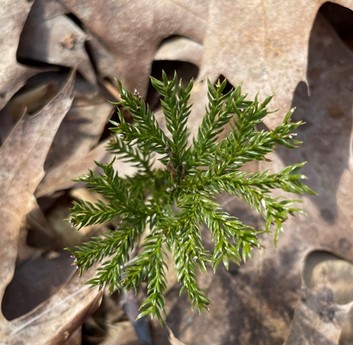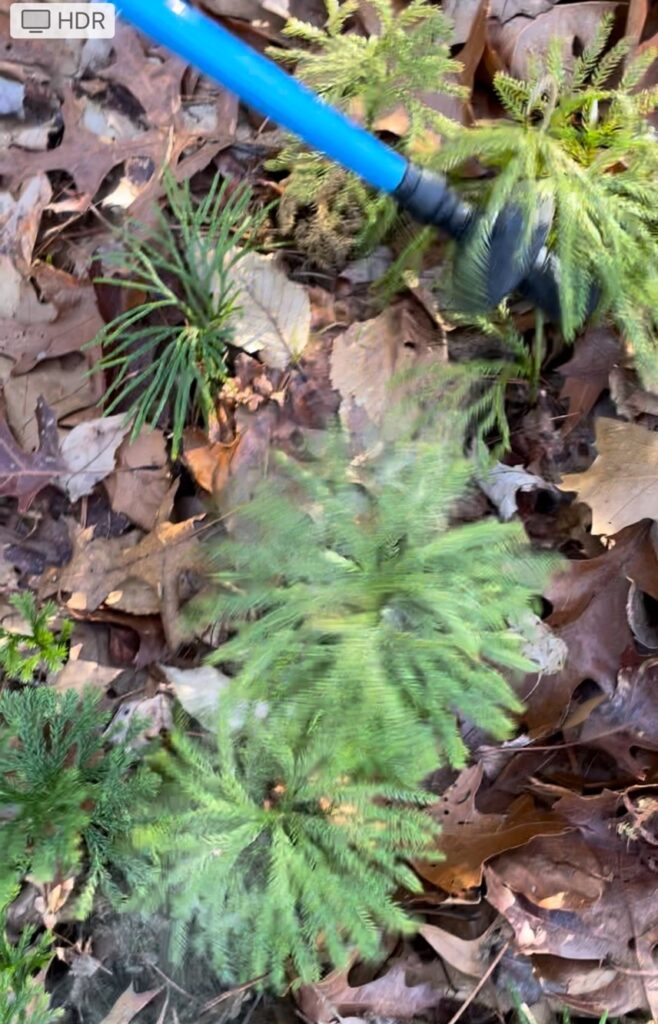
Take a walk on our land trust trails this winter, and you will notice evergreen clups of Princess Pine, also known as flat-branched club moss (Dendrolycopodium obscurum). This low-growing, ancient plant is native to the northeastern United States, including Connecticut, and thrives in shaded, acidic soils, often beneath pine and mixed hardwood forests. In the starkness of winter, its vibrant green foliage stands out against the leaf-littered forest floor, making it easy to spot.
Princess Pine is a relic of prehistoric times, representing the Lycopodiophyta group, which includes some of the first vascular plants to evolve. Despite its common name, it is neither a true pine nor a tree but a type of club moss. The reproductive structure of Princess Pine is the strobilus, a club-like cone borne at the tips of its shoots and branches. In the fall, these strobili produce clouds of fine, dust-like spores. These spores were historically used as “flash powder” for theatrical pyrotechnics and photography, producing bright bursts of light.
While the plant spreads slowly through underground rhizomes, it plays an essential role in stabilizing forest soils and preventing erosion. Additionally, its dense mats offer habitat for soil-dwelling organisms and small insects, contributing to forest-floor biodiversity.

Historically, Princess Pine and other club mosses were harvested extensively for holiday decorations such as wreaths, a practice which has led to the localized decline of many club moss populations. Since these plants grow very slowly and require years to mature, they are vulnerable to overharvesting. It is important to appreciate these plants in their natural habitat without disturbing them!
Photo 1: Princess Pine at Mendell’s Folly, Bethany, CT
Photo 2: Cloud of spores released by brushing strobili. Mendell’s Folly, Bethany CT
See you on the Bethany trails!
~Ali Beres-Nork
